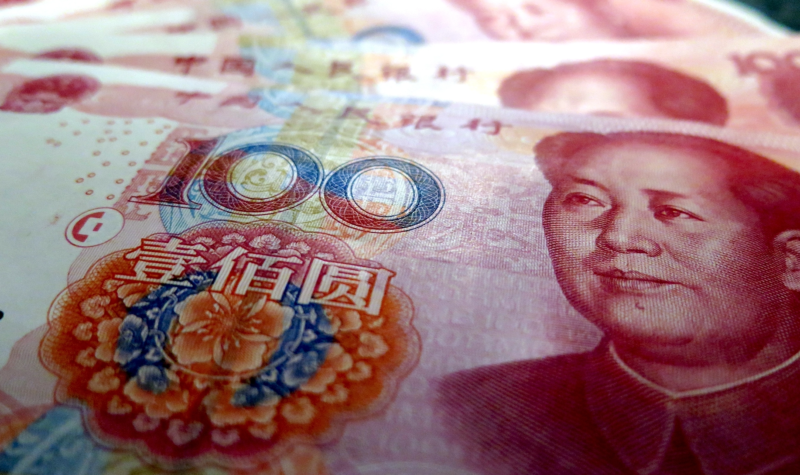The Politics Of Disaster Relief
After a 7.0 magnitude earthquake struck Haiti, the aftershock reached China in ways that few anticipated.The earthquake forced Chinese leaders to navigate the tricky politics of disaster relief.
On April 12, the Inter-American Dialogue and Boston University Global Development Policy Center co-hosted a public event to consider key trends in China-Latin America and the Caribbean (LAC) economic relations. Margaret Myers, director of the Asia and Latin America program at the Inter-American Dialogue, provided opening remarks. The panel also featured commentary from Rebecca Ray, senior academic researcher at the Boston University Global Development Policy Center, Rasheed Griffith, non-resident senior follow at the Inter-American Dialogue; and Fermín Koop, editor for Latin America at Diálogo Chino.
Citing findings from a recent Inter-American Dialogue and Global Development Policy Center report, Myers noted that China's policy banks—China Development Bank and China Export-Import Bank—are no longer issuing the sort of multi-billion-dollar, often oil-backed loans that once largely characterized Chinese finance to the region. In 2021, for the second year in a row, China’s policy banks issued no new loans to Latin American governments or state-owned enterprises. However, she suggested that China is still playing an important role in providing finance for certain types of activity in the region through a range of actors and platforms. “China’s policy banks, in addition to an increasingly wide range of Chinese creditors, are still actively supporting China’s economic activity in the region.”
Ray provided key findings from the Boston University China-Latin America Economic Bulletin, highlighting, among other things, a record LAC trade deficit with China in 2021 and a remarkable shift toward mergers and acquisitions (M&A). Ray noted that although exports to and imports from China both increased last year, “supply chain kinks and Covid-19 lockdowns hampered [Latin American] production and exports,” so that China’s exports to the region far outpaced LAC’s exports to China. The region’s vaccine imports have largely been driven by well-established trade ties, and not by political determinations, Ray added.
The region has also seen a jump in China’s share of M&A activity, with China accounting for over 20 percent of total regional M&A from 2017-2021. This is due in part to China’s enduring interest in certain economic sectors, but also to slowing interest among other, traditional partners. In many cases, Chinese companies have managed to purchase the assets of other foreign investors, which have exited the region amid declining profits. Chinese companies are presumably less dependent on immediate economic returns, helping to ensure some degree of investment even during periods of economic difficulty in LAC. Post-commodity boom M&A from China has focused in very large part on infrastructure, especially in the energy sector.
Griffith noted that Chinese finance and investment is indeed an important and enduring feature of the relationship in both Latin American and the Caribbean, citing instances of policy bank, commercial bank, and Chinese company activity in specific Caribbean nations. Special economic zones are driving some of this activity, he added. Efforts by Caribbean embassies in Beijing have also prompted some recent activity. Speaking from Panama, Griffith mentioned that relations would appear to be warming even there, noting a recent high-level visit between foreign ministers.
Koop suggested that Argentina’s recent decision to join the BRI has been debated in the country for years. The move led to a wide array of new agreements, some of which had been negotiated far in advance of Argentina’s decision. These projects were highly concentrated in the energy sector, including new funding Santa Cruz dams in Patagonia, a solar plant in Jujuy province, and a new nuclear power plant. For the latter, Argentina is now seeking full (rather than 85 percent) Chinese finance.
Koop also expects more Chinese activity in the region’s lithium sectors. In Chile, President Gabriel Boric has suggested that China will remain a critical partner for Chile, while also highlighting the importance of intraregional trade. In the lithium sector, Boric is expected to prioritize the generation of added value, with possible implications for Chinese and other investors.
The extent to which China will contribute to energy transition in LAC is unclear. As Koop noted, “China has definitely been a big player in terms of energy investment in the region over the years. The question is whether China will solely be focusing on renewable energy investments, helping that energy transition, or whether we will see a continuity of investments in fossil fuels, which we have also seen over the last few years." China is nevertheless well positioned to support Uruguay’s “second energy transition,” Koop suggested, including by selling electric vehicles for the country's public transportation fleets.
The panel ended with an engaging Q&A session. Questions were focused on the implications of BRI membership, the extent of Chinese sensitivity to growing tides of environmentalism and recognition of local communities in the region, and shifting views of China in Latin America, among other topics.
Chinese firms expected to keep energy, infra M&A focus, Bnamericas, April 12, 2022.
After a 7.0 magnitude earthquake struck Haiti, the aftershock reached China in ways that few anticipated.The earthquake forced Chinese leaders to navigate the tricky politics of disaster relief.
2009 has not been a good year for U.S.-Latin America relations. Despite their warm welcome at the April Summit, Latin America’s governments made life more difficult than anticipated for President Obama.
What do the election results mean for hemispheric policy and foreign relations?
